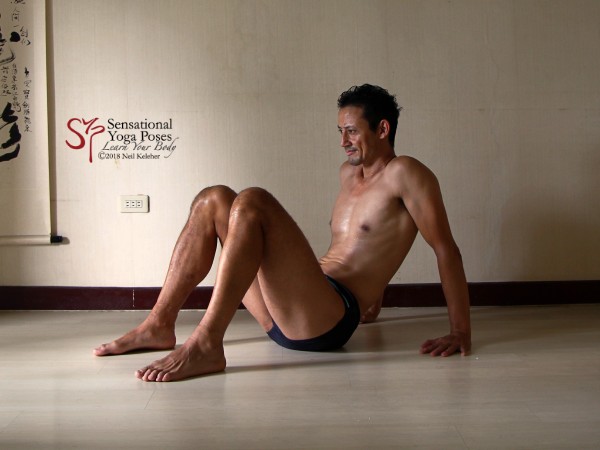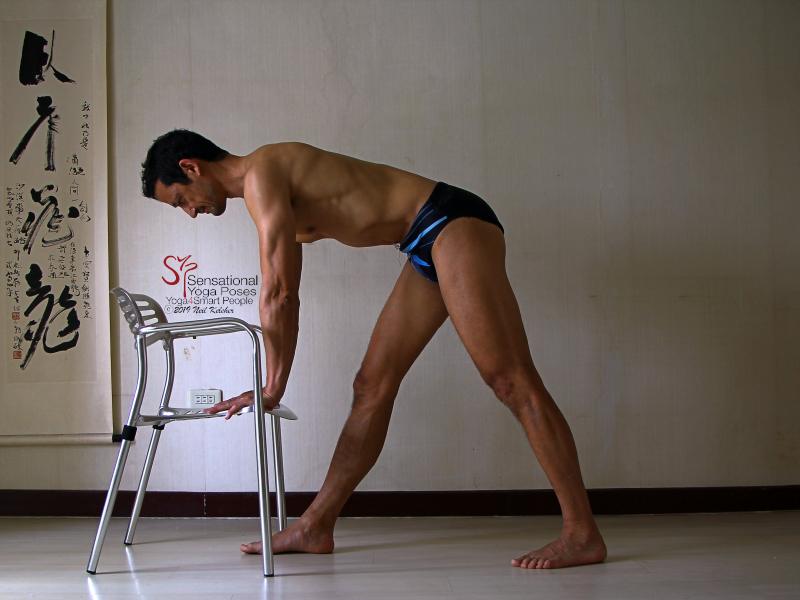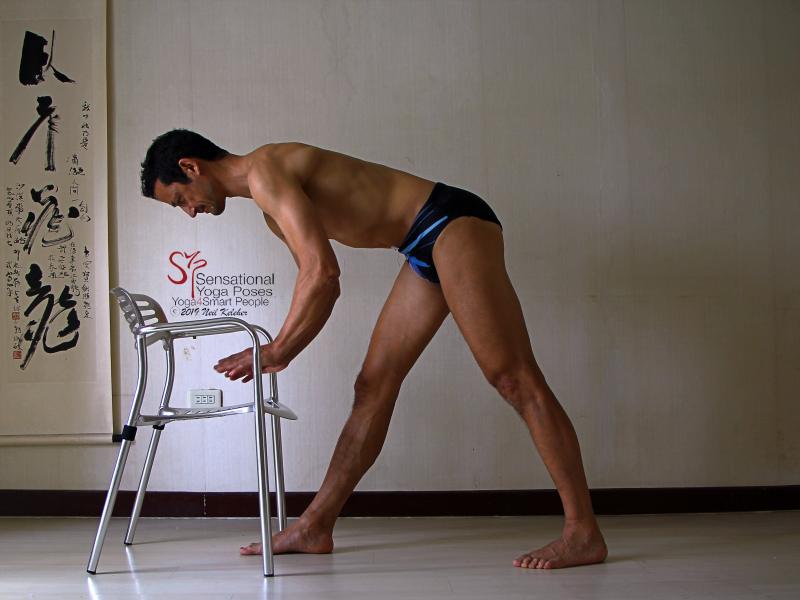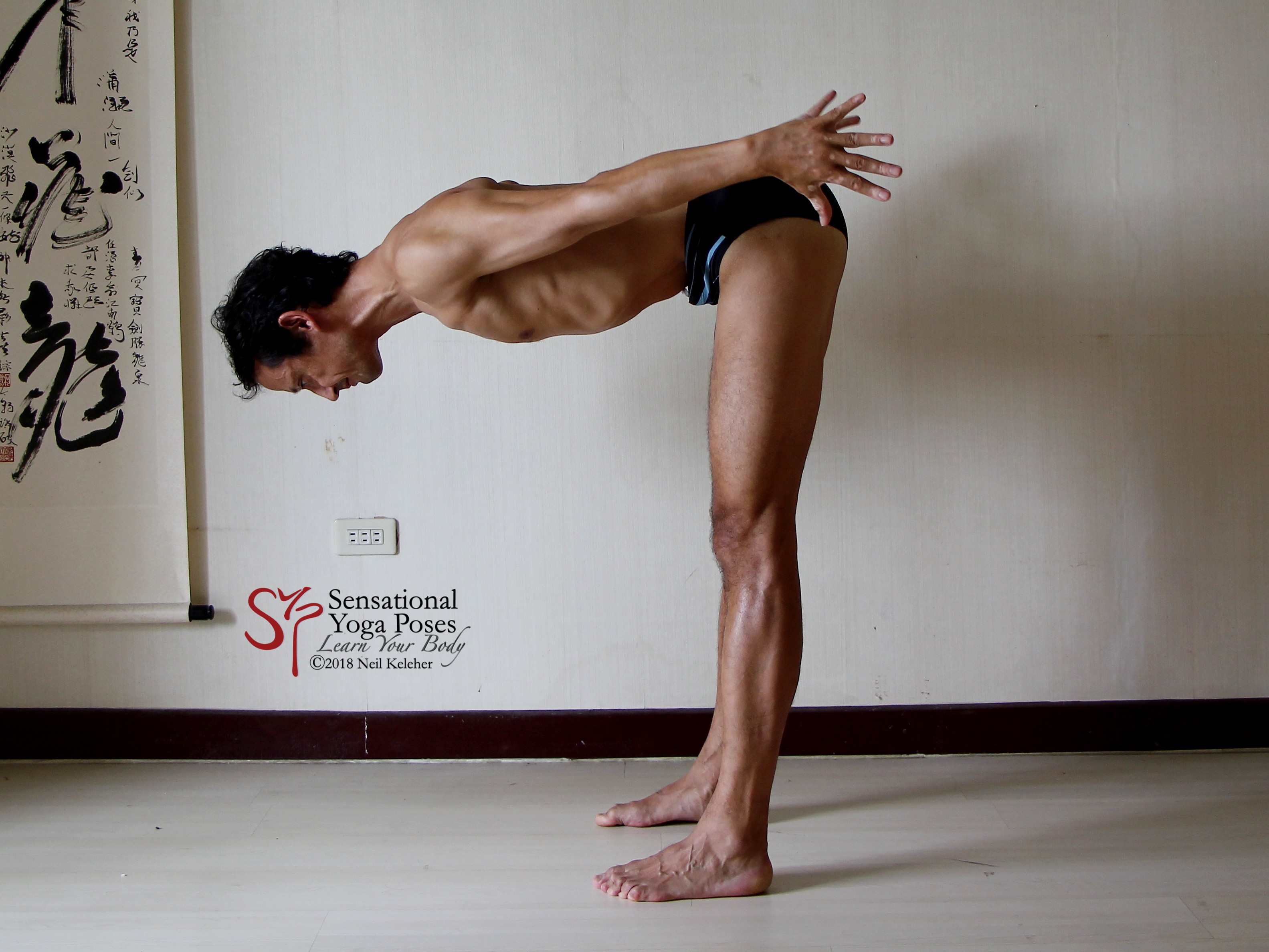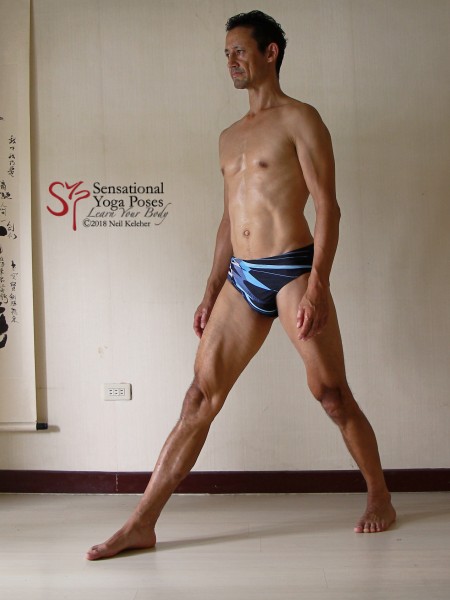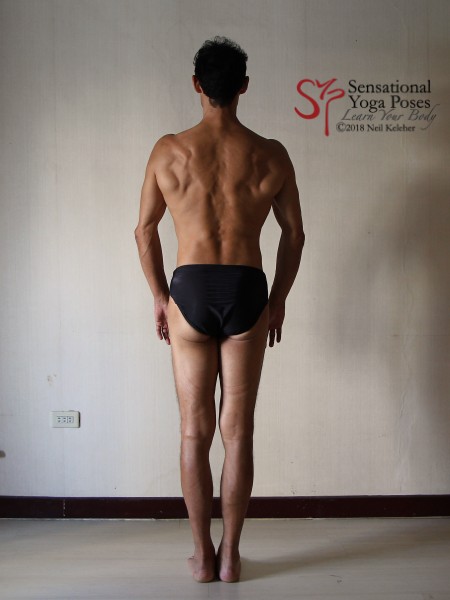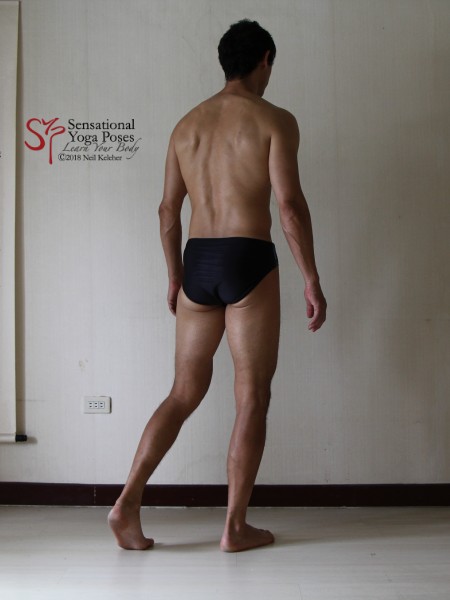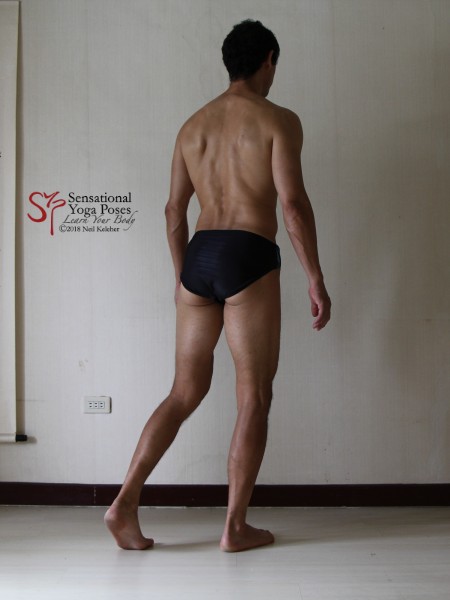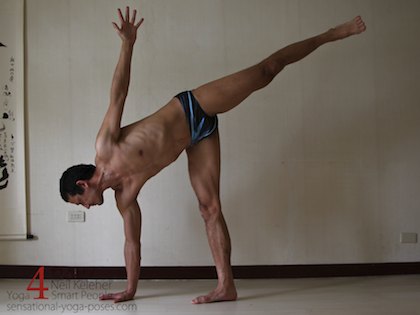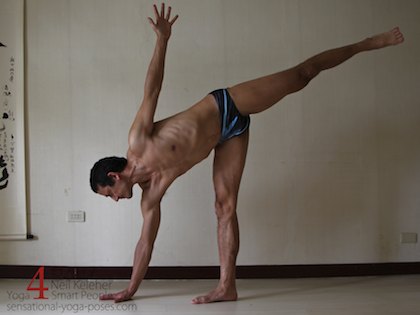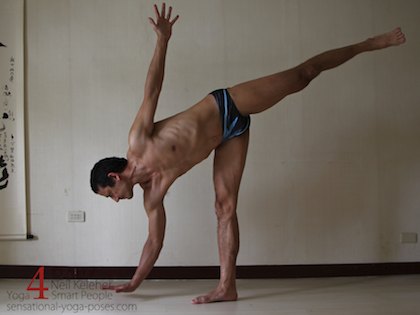Creating space, stability or relaxation
(how much of each should I create?)
One general principle I try to adhere to that makes the body both more feelable and more responsive is that of creating space. Another is that of creating stability. Note that another quality that is also important is that of relaxation which you could think of as releasing tension.
One reason for also practicing relaxation is that it then gives you a datum for how much effort you are using. You can then learn to adjust your effort to the point of "just enough".
It gives you the ability, eventually, to answer the question: "how much space (or how much stability) should I create?"
Note that with both stability and space, the general result is some sort of tension. You could thus think of relaxation as being at the opposite end of the tension spectrum, zero tension.
The interplay of stability and control
Interestingly enough, (well, I find it interesting) for someone studying how to design aircraft there is a subject area called "stability and control."
An aircraft can be designed so that it is very stable. The sacrifice is maneuverability and responsiveness. But the benefits are an aircraft that will stay on course despite changes in wind direction.
On the other hand, if a plane is designed to be responsive, then the sacrifice is stability. The plane will change direction as the wind changes direction. The benefits are a more manoeuvrable aircraft, however, the pilot has to work to keep the craft stable.
Creating stability, space or relaxation, and perception
With respect to our bodies we can be like a pilot of an aircraft that isn't stable. We can make the necessary control inputs to create stability as well as to control the direction or action of our bodies.
With a better ability to feel and control our body, we can use that sensitivity and controllability to create stability, space and relaxation.
All of these are things that we can learn to control and learn to consciously perceive so that we know our body is responding to our "control" efforts.
And the reason for creating stability, space and relaxation is that these in turn make it easier for us to feel our body and control it... with less effort.
Rhythmic changes and focusing on single qualities
In my own teaching endeavours I sometimes focus on moving between creating space and relaxation first and worry about stability later.
To that end I'll often start with seated poses because stability isn't such a large critical factor.
As an example, as a preparation for Table Top pose, I might teach students to use their shoulders to lift their chest. You could think of this as creating space between your ribcage and the floor. You could also think of this as creating space, openness, at the front of the shoulders.
However, if I start with standing exercises, say if my focus is on balance to begin with, then I'll focus on stability and relaxation and worry about the creation of space later.
One of my favorite standing forward bends is pyramid pose. For this I'll teach my students to activate or stabilize their legs while their hands are supported. Then, when their arms relax (as a result of their stable legs) they can lift their arms without disturbing the rest of their body.
With hands supported, a good hint that the legs are active and stabilizing the body is that the arms relax. When the arms are actively supporting body weight the legs can relax. When the legs are active, the arms can relax.
In both cases, what I tend to work on is either:
- Creating space and then relaxing and repeating or
- Creating stability and then relaxing and repeating.
Both types of movements can be turned into rhythmic movements and as they are repeated what we can tune in to are the feelings of creating space and the feelings of relaxation. With enough experience of these two extremes we can then explore the realm between them, finding a balance between relaxation and the creation of space.
Here's an example of lengthening the legs, spine and arms while doing a standing forward bend.
Note that I'm even spreading and lengthening my fingers.
Balancing the Creation of Space with Relaxation
Note that the creation of space has a couple of purposes.
- One is that it adds tension to the connective tissue network simply by creating space between adjacent structures.
- In turn it also gives adjacent structures room to move relative to each other.
- (As an added bonus, because creating space adds tension to connective tissue, this tension could be thought of as a sort of stability.)
Where practice is required is finding the balance between space and relaxation.
With too much space we may actually create excessive tension or take the part we are moving to the edge of its range of motion. If we are totally relaxed, then we lose have proprioception.
Balancing Stability with Relaxation
Where the creation of space may rely more on connective tissue tensioning, the creation of stability may be more a result of muscular tension.
Here too balance is required. Too much stability (i.e. opposing muscles working against each other) may be tiring and wasteful and can also deaden proprioception of parts of the body outside the contraction of muscle. Too little muscle action may mean that stability isn't actually achieved.
Tension Control and Improving Conscious Proprioception
As just mentioned, two main types of tension that we can learn to feel are
- muscular tension or "muscle activation sensation",
- connective tissue tension.
Muscle Tension
Large muscles with larger/thicker muscle bellies or numerous closely grouped muscle bellies are easier to feel than thinner, smaller or sparser muscle fibers.
Since the muscle action of smaller muscles is difficult to feel what we can instead learn to feel is the tension in the connective tissue that is created by their activation.
In pyramid pose, first picture below, I've activate the quads of both legs. The quads are a larger muscle, and so easier to feel directly.
Standing upright in the second picture, I've moved my shoulders forwards so that my shoulder blades are protracted. The muscles that cause this action, serratus anterior, are thin and hard to feel. So I have to infer their activation from the stretching sensation created between my shoulder blades.
In general, the key to improving proprioception (in my experience) is to repeatedly turn tension on and off, whether it is muscular tension or connective tissue tension.
With muscle tension, movements can be used that turn muscles on and of. If done smoothly and slowly enough and if the practitioners attention is directed to the rough location of the target muscles they may then be able to discern the different sensations that occur as the muscle is activated and then relaxed.
An example is learning to feel the spinal erector muscles activating and relaxing when, say, the lumbar spine is bent backwards (spinal erectors active) and then when the back bend is released (spinal erectors relaxed.)
In the first picture below, my lumbar spinal erectors are reasonably relaxed. I activate them in the second picture by lifting my sacrum so that my pelvis tilts forwards. My lumbar spine lordosis (or back bend) is thus increased.
Connective Tissue Tension
With connective tissue tension, movements are again used, but instead of focusing on the muscle being used (which may be too small or too thin to perceive) the focus is on the movement of the bones and any change in sensation that accompanies those movements.
An example of this is feeling the ribcage as the spine is bent backwards and forwards and noting the sensations in the chest and ribcage as it lifts and lowers.
A general tip on creating connective tissue tension is to work on creating space, make the body "feel big" or "expansive." (But not too expansive.)
How do you improve proprioception?
The basic technique that I use to improve proprioception is to use repeated movements to create repeated changes in sensation. These movements cause muscles to activate and relax and that in turn creates changes in both muscular activation sensation and sensation from connective tissue tension. To get a better feel for ground contact and pressure, I'll teach weight shifting exercises as well as the use of friction and pressure.
You can do weight shifting exercises while standing, and that's generally how I first teach it. But you can also do it in a pose like half moon. In the first picture below my weight is shifted towards my hand. Note the angle of my standing leg.
In the second picture, my weight is shifted away from my hand. If my foot and ankle is stable, my hand will feel relaxed.
Here, my weight is over my foot. My foot and ankle are stable and I can lift my hand. I'm doing this by feel. I'm activating my foot and ankle and feeling it activate. And I'm feeling my hand relax. If it doesn't relax, then I shift my weight further away from my hand until it does.
Perhaps the most important tip for improving proprioception is to move slowly and smoothly.
Simple techniques for practicing and improving proprioception and control
Because I teach proprioception and control in my classes, I've often come across students who have difficulty learning to proprioceive. And mainly it's because they have difficulty controlling their muscles. In general they can't activate them. And so my general technique with students of this type is to use friction. This technique has benefits for people who do have reasonable muscle control also. It can be used to strengthen muscles. Read more about Frictional Muscle Control.
Because frictional muscle control requires two points of contact, I also teach pressure activation. Instruction in that too is included in Frictional Muscle Control.
One of the areas of our body that we frequently forget when doing yoga is our feet. That is unless your doing a forward bend and notice that your toenails need a trim. (I've done it too!) Foot proprioception and control is an important topic not the least because it offers a simple way to provide your leg muscles with a firm foundation. It can make it easier to improve leg flexibility also. Read more about Extreme stability for yoga.
For a slightly less vigorous approach to learning your body, 5 sensational yoga routines for beginners includes simple (and progressive) exercises and poses for learning to feel your body. There is some overlap between the routines, and each routine builds up on the experiences of the one before it. You thus get a simple way to improve body awareness in the format of a yoga routine. Each routine is about an hour long and each one can be broken down into component exercises if you are short on time.
Note, if you are stuck for choice, you can get all three together. Find out here, in 5 sensational yoga routines for beginners.
Published: 2017 03 20
Updated: 2021 02 05

